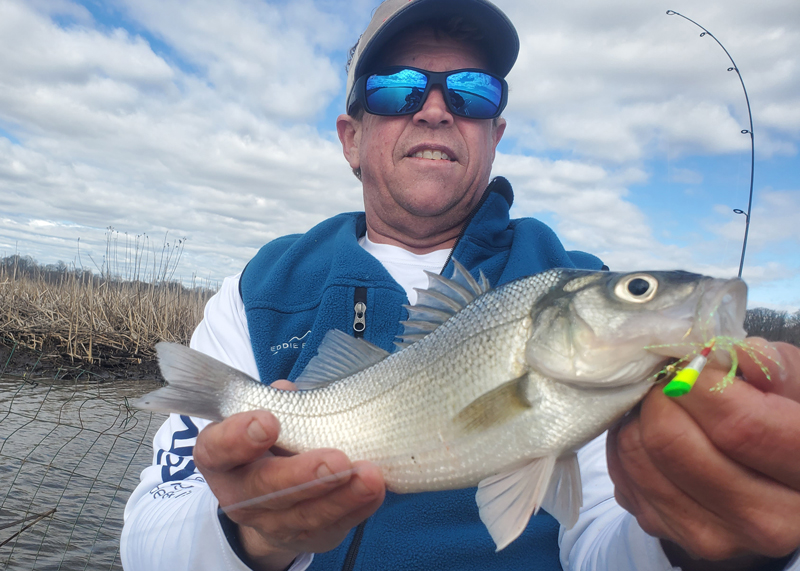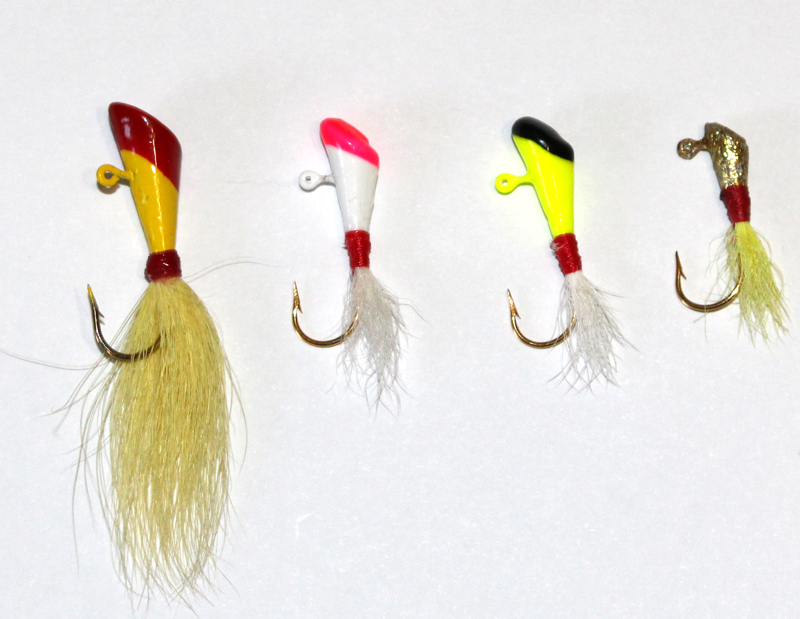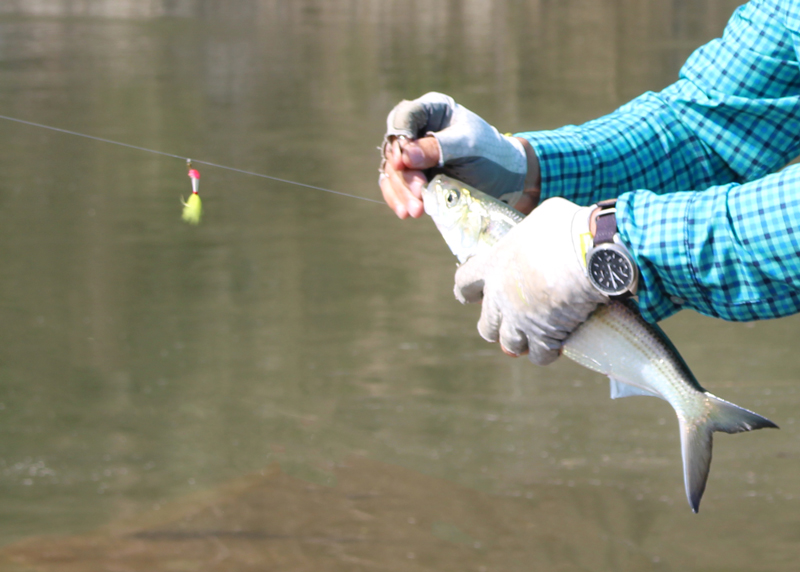Countless anglers plying the waters of DelMarVa have used shad darts thousands of times and caught countless fish on them — without ever necessarily shad fishing. While fishing for shad can be a ton of fun, they only run for a month or two in the spring and not everyone targets them. But those darts? They’re highly effective for catching an amazingly wide range of species through just about every different season. Yellow and white perch, bass, crappie, pickerel, and other species will all snap ‘em up with abandon. If, that is, you fish them properly.

What is a Shad Dart
Shad darts have a wide range of sizes and colors, but share a similar shape. They generally have a flat head, eyes slightly below it, and a body that tapers down to the hook shank. Where the head meets the shank, a sprig of bucktail hair adorns the hook.
Many shad darts are painted with one color on the tip of the head, then have a contrasting color below it. The bucktail hair may match the other colors or may be in contrast. Some classics are pink at the top, a white body, and yellow hair; black at the top, a chartreuse or lime green body, and white hair; or red at the top, a white body, and a different color hair. You’ll find countless combinations and deviations and from one day to the next, and you never know which will work the best.

There’s one big difference between fishing a dart for shad and fishing them for anything else: when shad are the target they’re fished without any bait added, but for most other species you’ll want to tip them with bait. Some of the prime offerings generally include:
- Bass – Large or medium minnow
- Crappie – Small minnow
- Pickerel – Large minnow
- White perch – Grass shrimp
- Yellow perch – Grass shrimp or minnow
How to Fish Shad Darts
If shad are your quarry the dart is usually tied into a tandem rig (often with the other offering being a very small spoon) with the lures a couple feet apart, cast out and allowed to sink, then retrieved with slight jigging motions. For a full rundown on shad fishing be sure to see Spring Shad Fishing and American Made: Shad Fishing.

In most other cases the dart will either be fished under a bobber or cast and slowly retrieved. Which will be most effective at any given time is something of a judgement call, and in many cases will be a factor you need to ascertain on a day-to-day basis via trial and error. That said, as a general rule if the water is just a few feet deep a bobber will be the better bet, or you may be forced to retrieve too quickly in order to prevent fouling the hook with growth or snags. This is often the case in some of the shallow Eastern Shore millponds, where there may only be a couple of feet of water over weedbeds holding crappie and pickerel. Another time bobbers rule is when the fish are holding exceptionally close to snaggy cover, and you need to be able to place your bait in the danger zone and hang it there.
Ditching the bobber and casting and retrieving will generally be a good move when fish are holding a bit deeper, and you need to let the dart sink down to reach them. Upriver Bay tributaries where the perch often gather in the deepest portion of the channel on a low or outgoing tide is an excellent example.
Tidal rivers where docks may be holding fish, such as the Magothy, are a prime case study in an all-bets-are-off situation. Sometimes dropping a bobber rig right next to the pilings does the trick, while other times the fish much prefer a dart tossed parallel to the pilings and then retrieved past them. As is often true in the world of fishing, experimentation is the key to success.
In all of these cases, remember: unless shad are the quarry you should generally have some bait on that hook. While you can catch a crappie here and a perch there without any, shad darts on their own aren’t incredibly appetizing to any particular species.
When to Fish Shad Darts
This will be a short section, because the answer is simple: whenever targeting any of the aforementioned species, just as long as the water isn't so deep nor the current so strong that you can’t regulate their depth. And in that case, you can always opt for a bucktail, which in truth isn’t very different from a shad dart in the first place. Note that darts become a key part of the arsenal for many anglers during the colder months of the year, when they work very well as what boils down to a slow-moving bait-delivery device. They’re also a mainstay during the spring perch runs, ranking among the top ways to rack up numbers of yellows (often with minnow) and whites (often with grass shrimp).
Now, back to our discussion about your tacklebox. Do you have at least a couple dozen shad darts of assorted colors and sizes? If not, we have one simple bit of advice: head for the tackle shop, and fill up those trays asap. Because once you try fishing shad darts you’ll realize that few offerings work better — even when there aren’t any shad within 1000 miles.